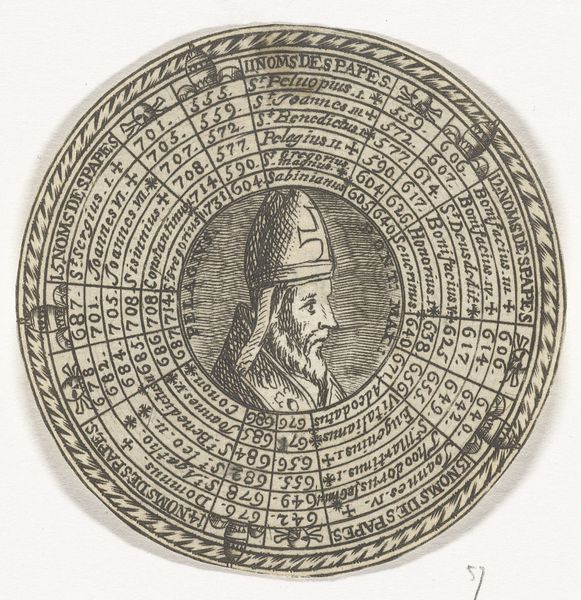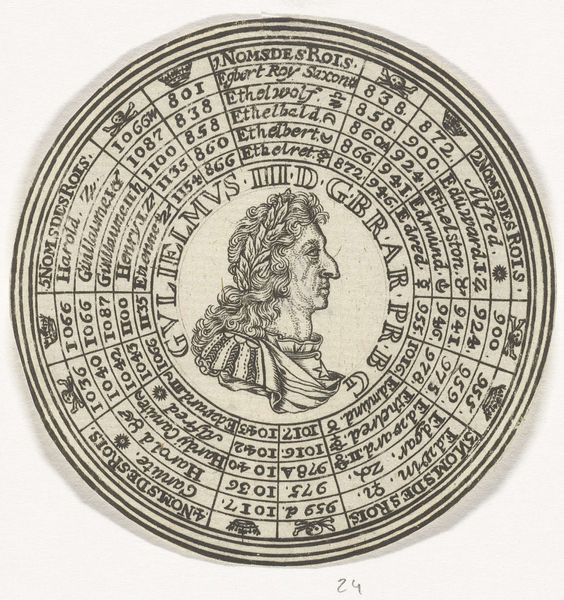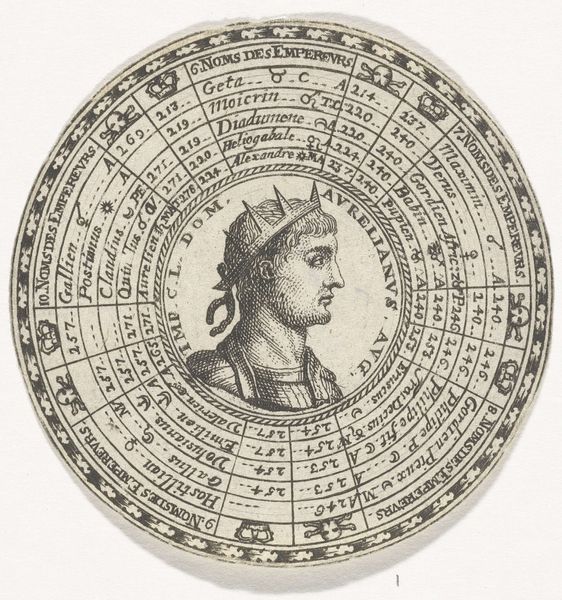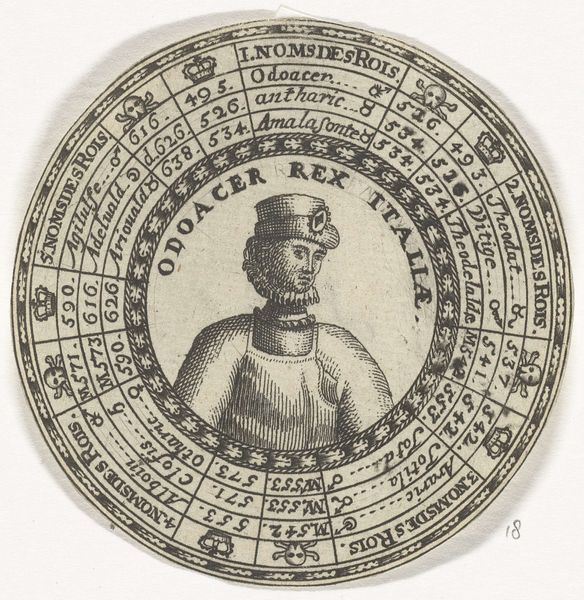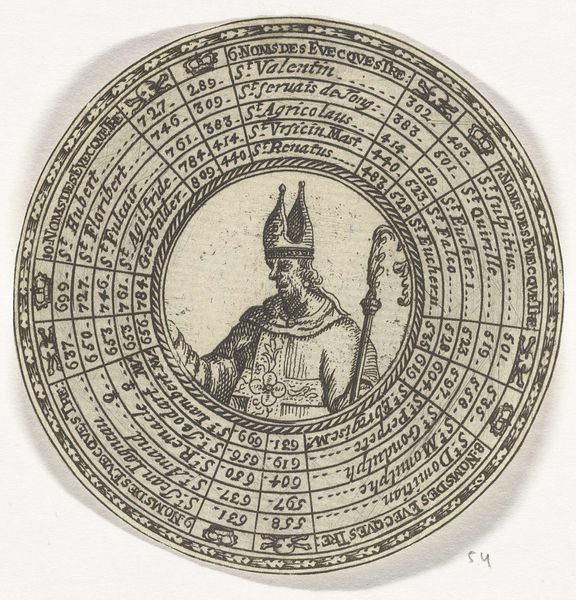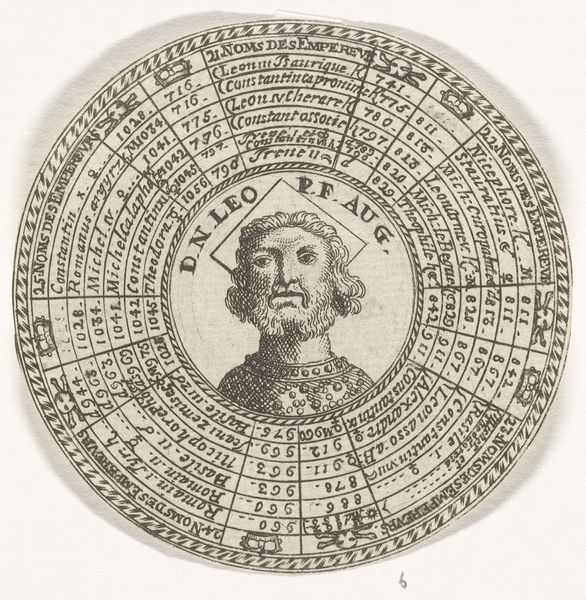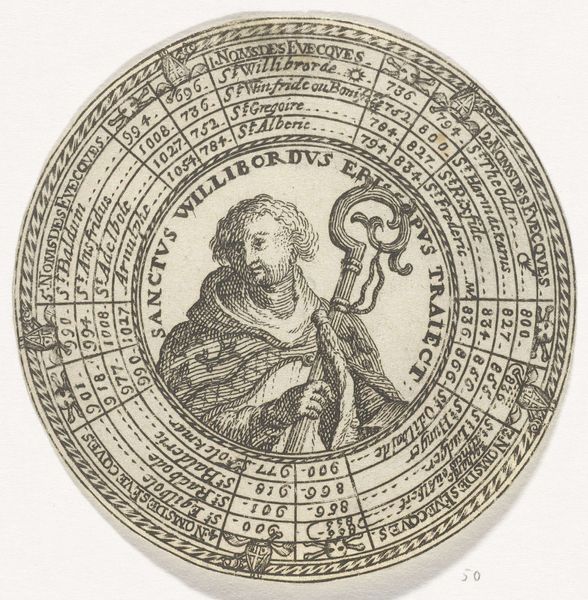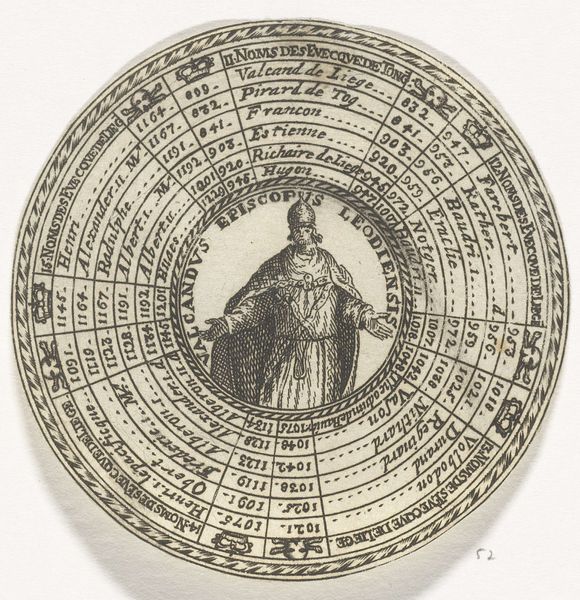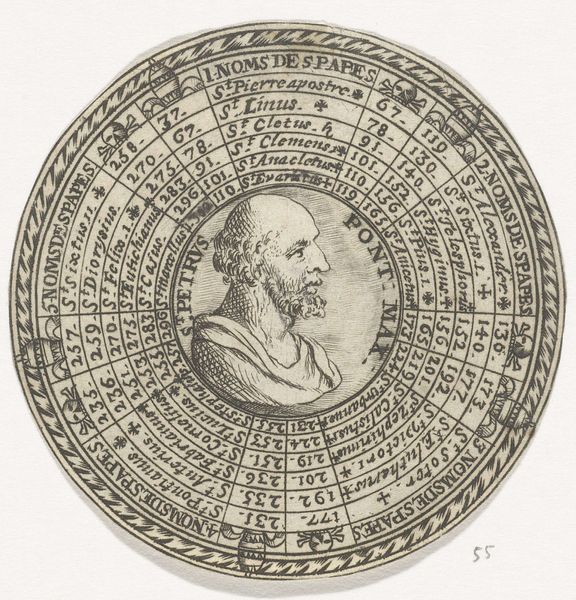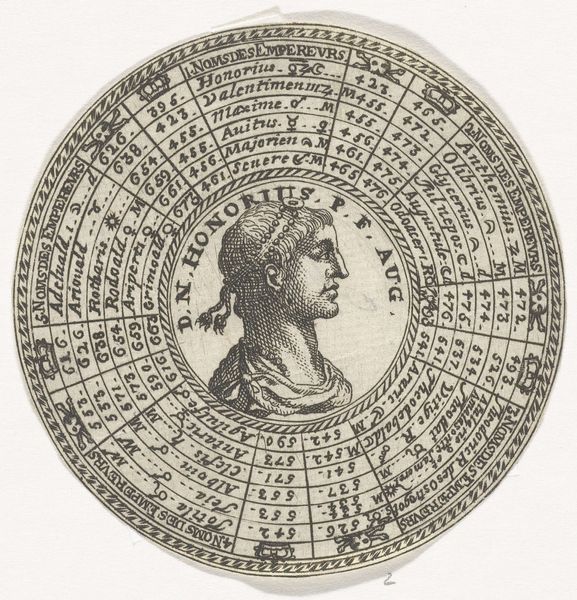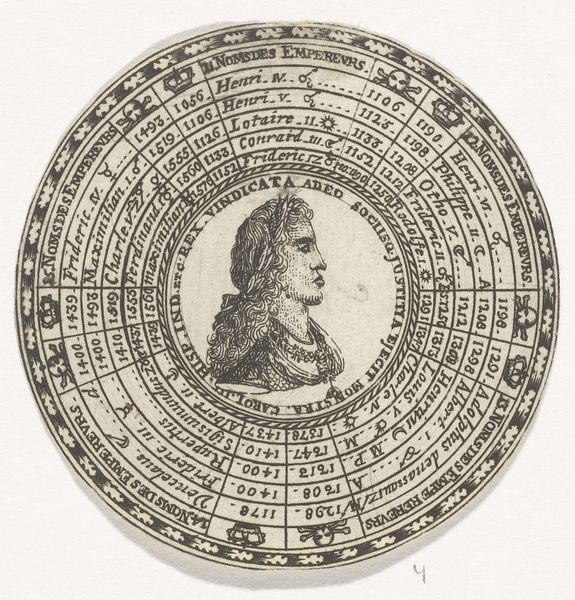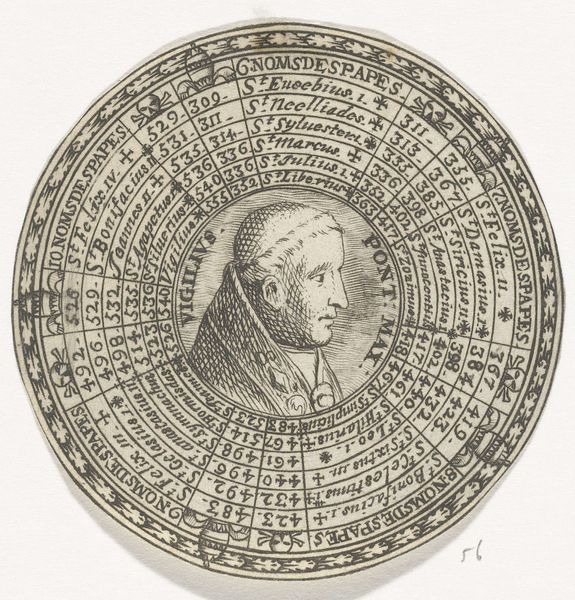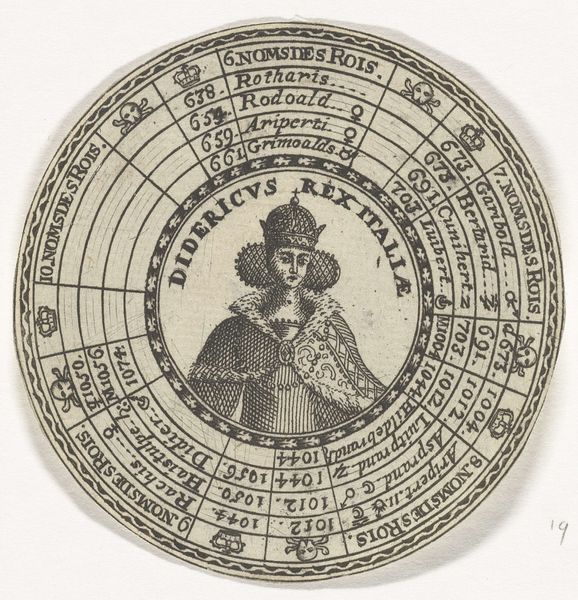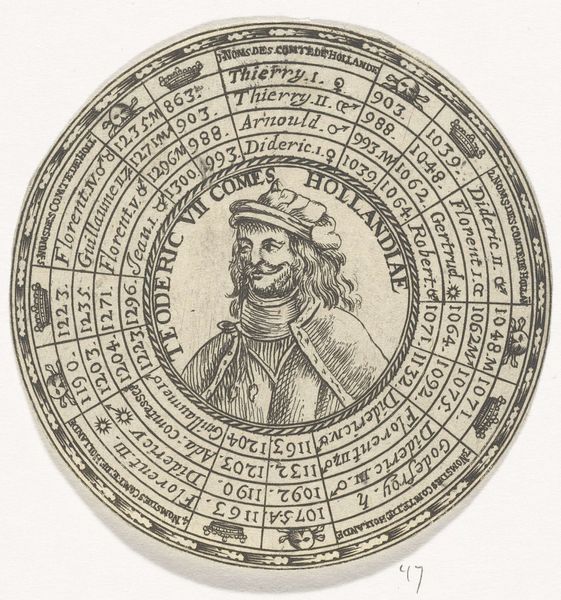
Penning met het portret van Willem III en de namen van de bisschoppen van Utrecht 1685 - 1720
0:00
0:00
print, engraving
#
portrait
#
medieval
# print
#
engraving
Copyright: Rijks Museum: Open Domain
This round print, portraying Willem III, Bishop of Utrecht, and listing his predecessors, was made using engraving, a printmaking technique that demands precision and control. The image's fine lines and intricate details were achieved by carefully incising lines into a metal plate, likely copper, with a tool called a burin. This painstaking process requires skill, patience, and physical effort. Once the image is carved, ink is applied to the plate, then wiped away from the surface, remaining only in the incised lines. Paper is then pressed against the plate, transferring the ink and creating the print. The circular composition and the inclusion of text suggest the print was created for educational or commemorative purposes. The choice of printmaking, a readily reproducible medium, also speaks to a desire for wider distribution. While seemingly simple, the print is evidence of both technical mastery and the social impulse to document and disseminate knowledge. It exemplifies how the convergence of material, process, and context yields meaning.
Comments
No comments
Be the first to comment and join the conversation on the ultimate creative platform.
